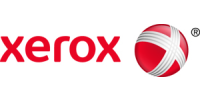Xerox's Transportation Predictions for 2016 - and Beyond

City transportation agencies are currently trying to plan for what 2016 might bring. Hot topics include driverless cars and the eradication of parking meters. There are plenty of exciting developments on the horizon.
Parking Network sat down with Matt Darst, vice president of Mobility and Parking Solutions at Xerox to discuss predictions for the upcoming year.
What do you think will be the 2016 trends in parking systems?
There will be fewer meters. Municipal budgets can no longer support the costs of purchasing and maintaining parking meters. And why should they? As more and more customers move toward pay-by-cell purchases and away from coins, the need for meters declines.
Furthermore, we will hear the word “parking” mentioned less and less outside the context of mobility. The terms are really inexorably linked. The time one spends in a car, on a bus, on a bike, or even trying to walk across the street is all driven – in part - by parking demand. When we think of parking in the future, we will think less of the notion of backing or pulling into a space, and more about the process of parking. That process begins before the key is even put in the ignition. It begins when a person contemplates a trip and extends through the drive, including understanding signs and searching for a parking space. The process includes paying for parking, adding time, and exiting. Even dealing with parking tickets is part of the process.
Finally, there have been multiple disruptors, apps manufacturers and the like, which have changed the way we view parking. For many, the road to profitability is long and bumpy. Some companies won’t last. The competitive landscape is going to shrink soon, leaving fewer, albeit capable, providers to service municipal clients.
How do you think the market will evolve?
The market will become more sustainable. Parking sensors can be expensive. Without outside funding like federal grants, it’s hard to pay for them. It’s also hard to prove there’s return on investment. No one knows how many people use wayfinding apps. Surveys suggest there aren’t many users. And while sensors offer cities revenue in the form of “gotcha ticketing,” essentially alerting enforcement staff when a meter has expired, studies indicate that chasing tickets is less profitable for a number of reasons, including:
- The violator may drive away,
- The parking enforcement agent passes other violations with higher fine amounts or collectability on the way to the meter, and
- People ticketed within seconds of a meter expiring are less likely to pay than someone ticketed several minutes after a meter has expired.
The market will address this challenge in three ways:
- Cheaper sensors. This will reduce some of the financial burden if there isn’t any outside funding.
- Data proxies. We’ve been playing with the notion of “asset lite” systems, using temporal and spatial sampling to estimate occupancy. You can obtain samples with CCTV, vehicle cameras, and even surveys. Payment data alone won’t cut it. You have to marry that data with use patterns, disabled parkers, and citation issuance to accurately predict occupancy.
- Cellular footprints. It’s possible that sensing technology will be leapfrogged entirely by technologies that recognize parkers through their cell phones.
We’re also entering a period where we begin to question traditional industry narratives. Armed with data, we will take a second look at assumptions. For example, we were led to believe that unmarked parking environments increased parking supply by 11 percent. Our studies suggest that probably isn’t the case. In fact, as the number of drivers increases, their parking becomes more inefficient. Rarely can the theoretical maximum number of cars be parked on a street. Often two or three parking spaces are lost during peak periods. Pay by space systems, by comparison, may be more efficient because people who perceive a marked space are more likely to park in it than a similarly sized unmarked space.
What new developments can we expect from Xerox in 2016, and how do you capitalize on these future trends?
As an integrator, we’ll continue to focus on analytics. And by analytics, I mean more than just reports and dashboards. While these tools are important, they neither identify patterns nor communicate those patterns to decision-makers. Analytics should be a call to action, not an exercise in data mining. Data scientists, computer vision and machine learning free our cities from that burden.
Getting drivers parked more quickly improves their experience, generates revenue, and reduces congestion. Consequently, we’ll work to make parking even easier for citizens, providing our clients with information about the right time limits, hours of operation and rates.
Demand-based pricing will grow in 2016, and, through our systems and expertise, we’re poised to implement analytics for drivers as we’ve done in Los Angeles. In LA, demand pricing reduced parking congestion by 10 percent and reduced rates an average of 11 percent, yet improved revenues by 2 percent.
Rather than implement “gotcha ticketing” we’ve found that we can improve productivity by recommending shifts and schedules that better match parking demand. We will rollout out predictive enforcement services to customers in 2016, establishing routes for personnel that improve issuance and reduce the time it takes to enforce. So far, our predictive capabilities have led to improvements for customers of between 16 and 20 percent.
About Xerox
Xerox is helping change the way the world works. By applying our expertise in imaging, business process, analytics, automation and user-centric insights, we engineer the flow of work to provide greater productivity, efficiency and personalization. We conduct business in 180 countries, and our more than 130,000 employees create meaningful innovations and provide business process services, printing equipment, software and solutions that make a real difference for our clients - and their customers. Learn more at www.xerox.com.






Comments
There are no comments yet for this item
Join the discussion